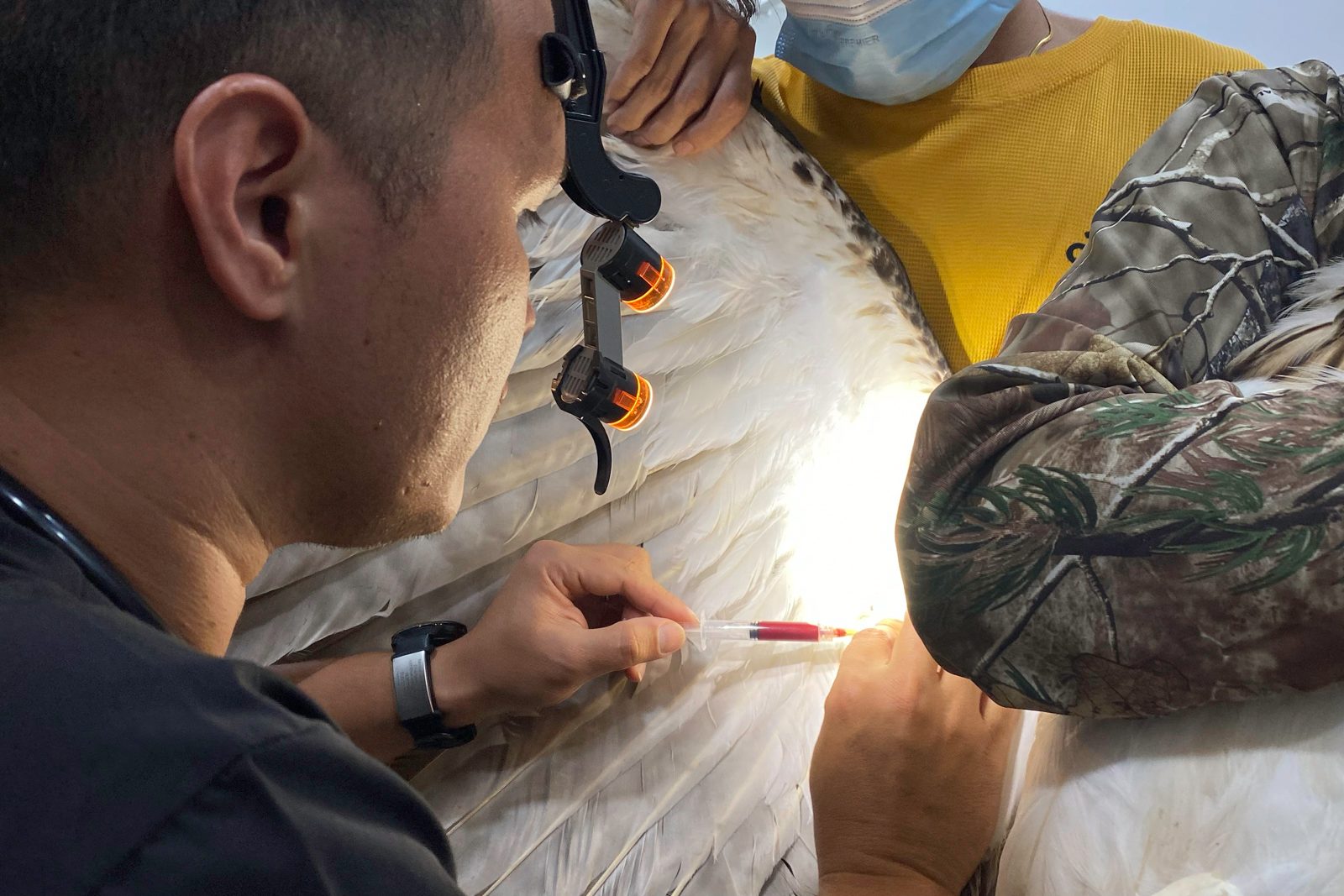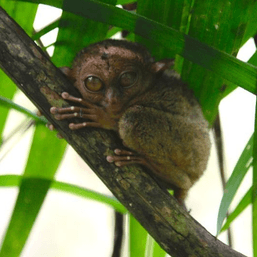SUMMARY
This is AI generated summarization, which may have errors. For context, always refer to the full article.

DAVAO, Philippines – A critically endangered Philippine eagle (Pithecophaga jefferyi), with a severe eye injury, was rescued from the wild along the Lipadas River at the Mount Apo Natural Park, Davao City, on Tuesday, January 2.
Lipadas, named after the river, is a two-year-old Philippine eagle with a blind right eye.
The rescue team comprised biologists from the Philippine Eagle Foundation (PEF), animal keepers, and a forest guard from the Bagobo-Klata indigenous community.
Jayson Ibanez, PEF director for research and conservation, who was also present during the rescue, said it marked the first-ever rescue of a one-eyed Philippine eagle in the wild. It is also the first PEF-documented case of an eagle acquiring an eye injury at the early stage of its nestling period.

Before the rescue, Ibanez said they consulted an expert from Kenya who examined photographs of the injured eye.
Based on the expert’s analysis, the eyeballs were already swollen, and it appeared that the right eye was completely blind. Consequently, the expert recommended trapping the bird and keeping it in captivity permanently.
“We always make it a point to rescue and save each imperiled individual. And with its status now being one-eyed, its survival chances in the wild are very low. But if we rescue it and take care of it in captivity, it can still contribute new individuals to the population by breeding it and then releasing any potential offspring back to the wild to help increase population numbers,” Ibañez said.
Initial assessment
The injured Philippine eagle was taken to a veterinary clinic by the breeding team for a thorough assessment.
Dr. Bayani Vandenbroeck, a veterinary consultant with PEF, conducted a physical examination, revealing that the eagle weighs 4.3 kilograms.

“The eagle seems to be healthy, except for the blind (right) eye. The eyeball is completely gone on the right side. The left eye appears normal, but changes seem to be happening inside. Also, the eagle might eventually be completely blind. There are no bullet wounds or evidence of any other recent physical injuries. The bones appear intact as well, with no evidence of fractures. The body condition score is 4/5, and it seems to have extra fats,” Vandenbroeck said.
Rowell Taraya, a PEF senior biologist who led in the monitoring, assessment, and study of the eagle even before it was taken in, said the bird will undergo rehabilitation at the Philippine Eagle Center (PEC) quarantine facility.
“After the full blood chemistry analysis is completed, supplemental food and medicines will be provided as needed. If its analysis showed an infection in the bloodstream, appropriate medication will be given,” Taraya said.
Taraya said blood samples will also be sent to the Institute of Biology Laboratory at the University of the Philippines-Diliman for confirmatory DNA sexing, and further assessment will be sought from a resident ophthalmologist and foreign experts to determine the appropriate intervention for the eye.
Discovery
The discovery of Lipadas dates back to October 2022 when the PEF received a report from a tribal chieftain, Bagobo-Klata Datu Mariano Daug, about a Philippine eagle spotted at Lipadas River.
Daug told them that the eagle slammed against the forest floor, but flew off when locals attempted to get near it.
“The place where they saw it is a known Philippine eagle nesting territory. The territory was first discovered in 2018, and a post-fledged young was spotted together with its eagle parents. Since then, the site has been monitored with the help of the Bagobo-Klata and Bagobo-Tagabawa Bantay Bukid Volunteers from Davao City,” PEF stated in a written report.
During the monitoring, the eagle, then a 10-month-old eaglet, was photographed, and a right eye injury was noted.
PEF said that although the young eagle is still capable of flying, its infected eye prevents it from going to farther areas.
The group tried trapping the then eaglet to rescue it, but it was too young to fly to the ground to catch the bait – a rabbit – and was still dependent on its parents for food.
In November 2023, the young eagle, estimated to be two years old, was observed loudly calling and “begging” for food from its parents.

“At such an age, healthy eaglets in the wild are fully independent and would have dispersed away from their parents’ territory. However, perhaps due to its eye injury, it remained dependent on its parents for nourishment,” the report said.
Due to concerns about the young eagle possibly starving, the team decided to give it supplemental food.
In November 2023, Lipadas managed to go down to the ground and feed, leading them to confirm that the young eagle can now confidently fly and hunt on the ground.
“To habituate the bird to the bait and ensure trapping and rescue success, we continued supplemental feeding in December. Starting December 19, 2023, our forest guards started deploying a rabbit to lure the young eagle back to the nest site. The young eagle came back and took and ate the rabbit,” read part of the report.
However, after Christmas, forest guards received complaints from fellow villagers that Lipadas started feeding on native chickens from farms, and farmers threatened harm to the bird if action wasn’t taken to prevent it from hunting livestock.
This prompted the PEF to schedule an emergency trapping activity and attempt a rescue on January 2.
Community-based conservation
Ibanez pointed out that Lipadas’ case underscores the significance of community-based conservation.
“Lipadas’ case points out the value of engaging indigenous forest guards who are the direct neighbors of Philippine eagles because of their proximity to the nesting site and familiarity with the Philippine Eagle and then other wildlife. It’s practically easy for them to monitor and then protect the species. It’s a proof of concept that indeed indigenous peoples can positively contribute to endangered species conservation,” he said.
Christian Tan, one of the indigenous forest guards of Bagobo Klata who assisted in monitoring the eagle and was part of the rescue team, said he couldn’t describe his feelings when he saw the eagle.
“It was really worth the effort because after all the time we spent monitoring it, I finally held it, and up close. I saw how beautiful and majestic it truly is,” Tan said.
After the rescue, Tan said he became even more motivated to contribute to the conservation of the country’s national bird. – Rappler.com
Ivy Marie Mangadlao is an Aries Rufo Journalism fellow.
Add a comment
How does this make you feel?




![[Pastilan] The Great Philippine Identity Sale](https://www.rappler.com/tachyon/2024/07/great-philippine-identity-sale-july-16-2024.jpg?resize=257%2C257&crop=486px%2C0px%2C1080px%2C1080px)





There are no comments yet. Add your comment to start the conversation.